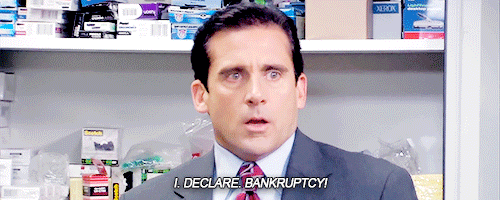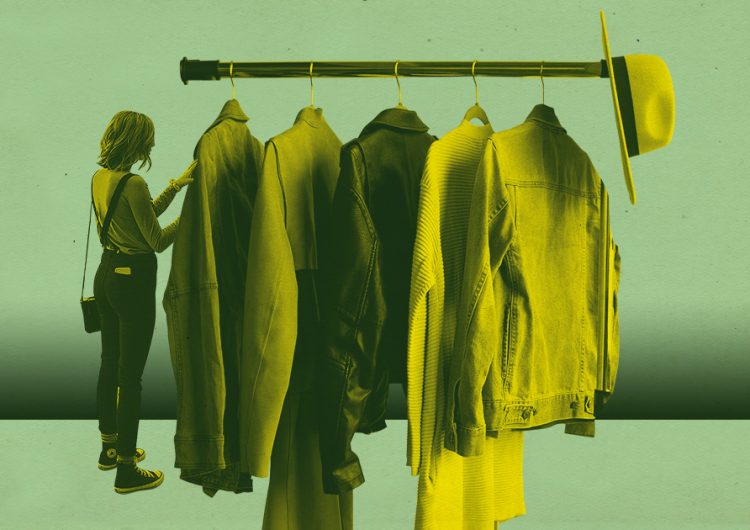Take a look in your closet. There are the clothes you wear all the time, the outfits that you save for special occasions, maybe some items that you’ve never worn before, but you’ll get around to it someday. Beyond planning to buy new clothes, you probably don’t give much thought to what’s in your closet. Most people don’t, and that’s the issue.
The textile industry is one of the highest contributors of carbon emissions—from harvesting material to transporting the final product all over the world. The process of dyeing fabrics is the second largest cause of clean water pollution, after agriculture. Still can’t picture it? Imagine this: A simple, innocuous cotton shirt requires 2,700 liters to make. Now consider that in 2017, a YouGov survey revealed that 29 percent of Filipinos throw away an item of clothing after one wear. The millions of tonnes of clothing we then throw away end up in landfills, where they will take decades to decompose. Common synthetic fabrics like nylon and polyester, celebrated for their ease in manufacturing and cleaning, shed with every round in the washing machine, eventually invading the ocean and other water sources, where these microfibers end up in the stomachs of the fish we eat. Because these fibers are so small, they’re nearly impossible to filter out every time you wash your clothes.
Read more: Green is the new black: Easy ways you can live a more sustainable lifestyle
These statistics are staggering—and unknown by many. That’s because fashion corporations keep manufacturing trends, relying on the eagerness of the public to continue to purchase more and more clothing. They keep us ignorant with a cheap price tag or the weight of a respected design house’s name. If that isn’t enough to make you pause, then what about the impoverished women and children in countries like Vietnam and Bangladesh who work for up to 16 hours a day in unsafe, toxic conditions, paid in an unlivable wage? They suffer in silence, producing the cheap clothing that line the shelves of fast fashion houses, the buying of which only serves to further fatten the wallets of executives. This problem goes beyond abstaining from furs and leathers—the very industry itself needs to be changed.
Don’t fret, though! It’s actually easier than you might think to positively and sustainably update your wardrobe. Such as:
Avoid big brands

Household names in the fashion industry are guilty of unsustainable fashion practices. Because there’s a market for these companies, they are able to operate as they please—meaning, as cheaply as possible while reaping a massive profit. And while they seem like untouchable giants, how you shop from now can have a positive impact. Many brands are beginning to adopt a sustainable approach to their production, from using recyclable materials to simply just treating their employees like actual human beings. Most of the time, you can spot if a piece of clothing was ethically made by the information on its price tag, but if you’re not sure how to interpret the info on there, here is a table that grades major brands on their sustainability and ethical practices. Also keep in mind to stay away from fabrics like nylon and silk, which require a lot of resources (such as toxic dyes) to produce. Instead, check out local brands here and here. Filpino brands are a better option for several reasons: they hire local craftsmen; their products are produced locally and often using organic methods with materials like linen and wool, so it’s better for the environment; and they’re cute as hell.
Donate the clothes you don’t wear anymore

Thousands of people who were affected by war or natural disasters or are unable to afford new clothing rely on these systems to clothe themselves. Instead of simply throwing away items that are too small, or stained, or out of fashion, give them to someone who needs them. There are many organizations that will gladly take them off your hands. Charities like Segunda Mana and The Red Cross operate locally and will accept donations, or you can ship your donation internationally to clothe refugees or the homeless in other places. If you want to make some extra coin, you can even put some brand items for sale online.
Read more: Swap your bag’s contents for these 5 eco-friendly alternatives
Break open a sewing kit

It’s the end of the world: you’ve ripped your favorite jeans. Before you panic, have you considered making those jeans into your new pair of favorite shorts? While it may seem daunting to carve up the clothes you love, some modification and DIY may be just the thing to give them new life. If you’re inexperienced with clothing alteration, there are plenty of online tutorials and guides to help you along the way, and if you want it professionally done, then you can pass the job along to your local tailor. I’ve never been taught, but with the help of YouTube, I’ve managed to patch up holes, adjust the sizes, redo loose seams, and make a nightgown into a summer dress (all without a sewing machine). So don’t be afraid of trying it on your own—the more you practice, the more you’ll improve. It may just become a new hobby!
Curb your spending

Yes, unfortunately, it is kind of bad to buy that really cute blouse you saw online. We as a society love to buy way too much clothing. Tell me, when was the last time you wore those bright green trousers? It’s difficult to fight the impulse to shop ‘til you drop, especially when stores are very much in your face with all their sales and deals, but you have to ask yourself whether an item is really worth it. It’s not just about maintaining your account balance, either. Because, no, you won’t die if you get that blouse, but the Earth certainly will begin to.
As a personal rule, I only buy something if I can make five completely different, but realistically wearable, outfits with it. And even then, I spend a long time debating the pros and cons of a purchase. If I’m still thinking about it a week after I left the store, then I’ll probably get it. But, like many clothes, my method is not a one-size-fits-all. Other people take their closet back to the bare basics, and use accessories and layers to spice up their looks. Other people set a strict wardrobe-space budget, allowing for only a specific number of pieces at a time, so that if they want to get something new, they have to get rid of something old. Your wallet will thank you, I promise.
Read more: 10 local streetwear labels that deserve your attention
Visit an ukay-ukay

Or a charity store if you want your money going to a good cause (bear in mind that the prices will be a bit higher). If you want to get super trendy and don’t mind paying shipping fees, try an online secondhand store like Depop, eBay, or Poshmark for unique curated pieces. But ukay-ukays are a homegrown form of thrifting, with unbeatable prices (think less than P200) for literally hundreds of racks and shelves. It may take some time, but you’re bound to find some gems. What’s great about secondhand shopping is that because the clothes are already made, purchasing them does not support fashion retailers and actually supports the local community. And even if you do a huge haul, it’s impossible to break the bank.
***
It is not enough to boycott the offending brands, but to actively work against the damage they have caused. Educating ourselves of the harmful impact of fast fashion and our own clothing habits is only half of the mission. We have to be able to move forward responsibly, without causing even more harm to the planet.
Art by Renz Mart Reyes

























Comments